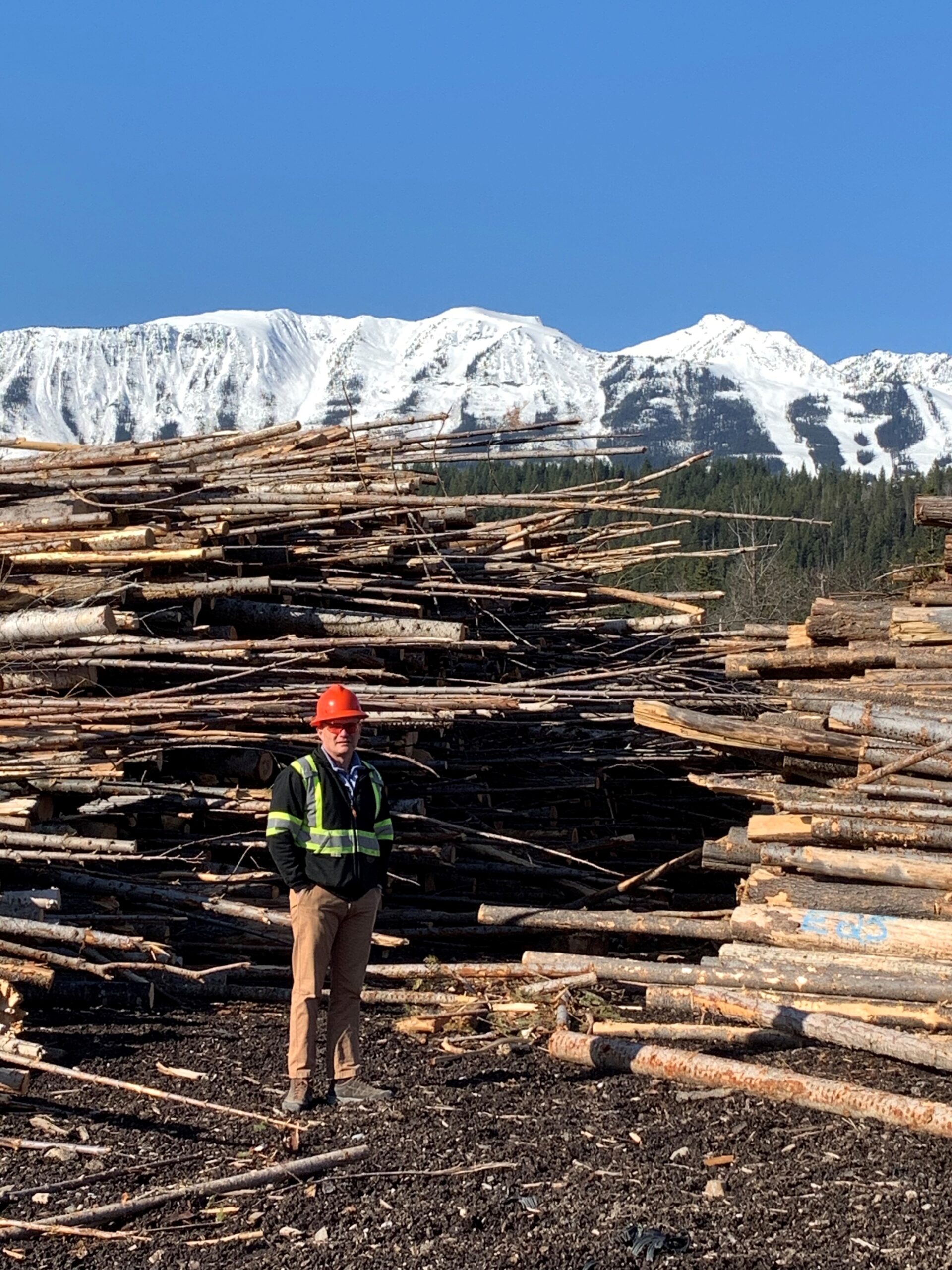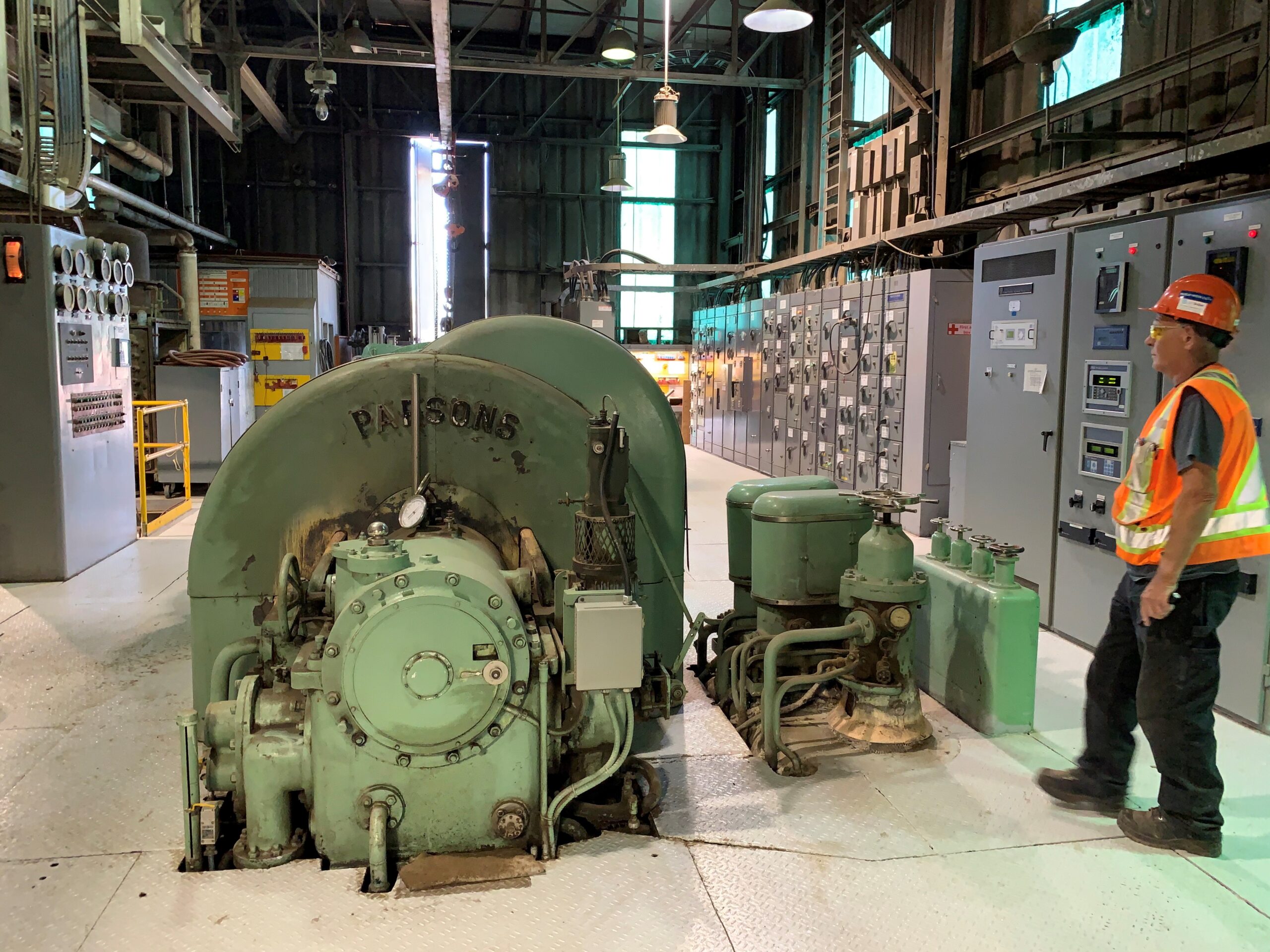GOLDEN, B.C.—The Forest Enhancement Society of BC (FESBC) has provided $655,000 in funding to LP Building Solutions (LP) to utilize over 30,000 cubic metres of residual fibre to generate power in Golden B.C.—equivalent to about 750 logging truck loads. Much of the residual fibre would normally be left behind on local logging blocks and wildfire risk reduction treatment areas to be burned, as it doesn’t meet sawlog or pulp log requirements. The funding enables an increase in the utilization of this fibre and reduces smoke levels by avoiding pile burning.

A significant number of logs are pulled out of Kinbasket Lake (a reservoir created by the Mica Dam) every year and normally burned. LP sees an opportunity to explore utilizing these logs from the reservoir and is using some of the FESBC funding to see if the logs can be a viable source of renewable energy to generate power for the mill. This project is a climate change solution to make renewable bioenergy to offset the use of fossil fuels in manufacturing and working with the forest products industry to improve forest utilization and sustainability practices by recovering fibre from the lake and utilizing it at LP’s facility in Golden.
“One of the biggest challenges of fibre utilization is having somewhere to use it so this is a unique opportunity where the fibre can be used to generate energy,” said Gord Pratt, RPF, Operations Manager, FESBC. “There’s a need and a desire to utilize this fibre and LP is looking at opportunities to utilize fibre recovery around Golden, including the utilization of fibre from Kinbasket Lake, to generate renewable energy to power its mill.”
Scott King, RPF, Silviculture Forester, LP notes the fibre from the reservoir is free from dirt, making it a cleaner fuel source to be processed into hog fuel. Being able to use this fibre would also result in a guarantee of fibre for the power plant.
“Like anything, when we try something new, people must come together to work collaboratively,” said King. “I’m very proud of what we’re doing as a company. It’s enjoyable to work on a project everyone is keen to get behind and support.”
Interestingly, LP Golden’s generator the fibre will power is based on WWII technology. The utilization of the wood fibre is close to 100% because there’s not a piece that goes to waste or gets thrown out.

Gord Ryter, who has worked as a powerhouse engineer at the facility since 1965, was there when the generator was brought in by Kicking Horse Forest Products in 1965 and said it has been running 24/7 at 3600 rpm for close to 70 years. As far as Ryter is aware, only one other generator like it exists. Having it run steadily contributes to its longevity as it avoids heat cycling, which weakens the metal in the turbine over time.
“The generator is a critical piece of this mill’s operation because it burns waste fuel,” said Ryter. “We have 400 employees here, and its continuous operation has helped guarantee employment for the community. Seeing this machine run that whole time has been amazing.”
Mayor of Golden, Ron Oszust, is also pleased with the project.
“This is an amazing example of industry working to find better solutions for our communities and our environment—thank you to LP and FESBC,” noted Oszust. “Reducing wildfire risk close to our community is critical and being able to avoid the burning of this fibre, along with other waste fibre to avoid smoke, benefits the community. This plant provides many long-term jobs to our community members, and we support the effort to innovate and explore new ways to power the plant.”
The project allows for the utilization of fibre normally outside LP’s economic reach and provides feedstock required by the old, reliable power generator while also reducing the greenhouse gases emitted from pile burning.
“FESBC is proud to support LP’s effort to increase the use of fibre normally burned in slash piles near Golden, and we are also proud to assist B.C. and Canada meet our climate change targets.” said Pratt.
This project is funded in part by the Government of Canada.
For an interview with FESBC contact:
Aleece Laird, Communications Liaison | communications@fesbc.ca | 250.574.0221
For an interview with LP contact:
Breeanna Straessle, Director, Corporate Communications | Media.Relations@lpcorp.com | 615.986.5886
About FESBC: the purposes of FESBC are to advance environmental and resource stewardship of B.C.’s forests by: preventing and mitigating the impact of wildfires; improving damaged or low-value forests; improving habitat for wildlife; supporting the use of fibre from damaged and low-value forests; and treating forests to improve the management of greenhouse gases. As of March 2021, FESBC has supported 269 projects valued at $238 million, in partnership with governments of B.C. and Canada.
